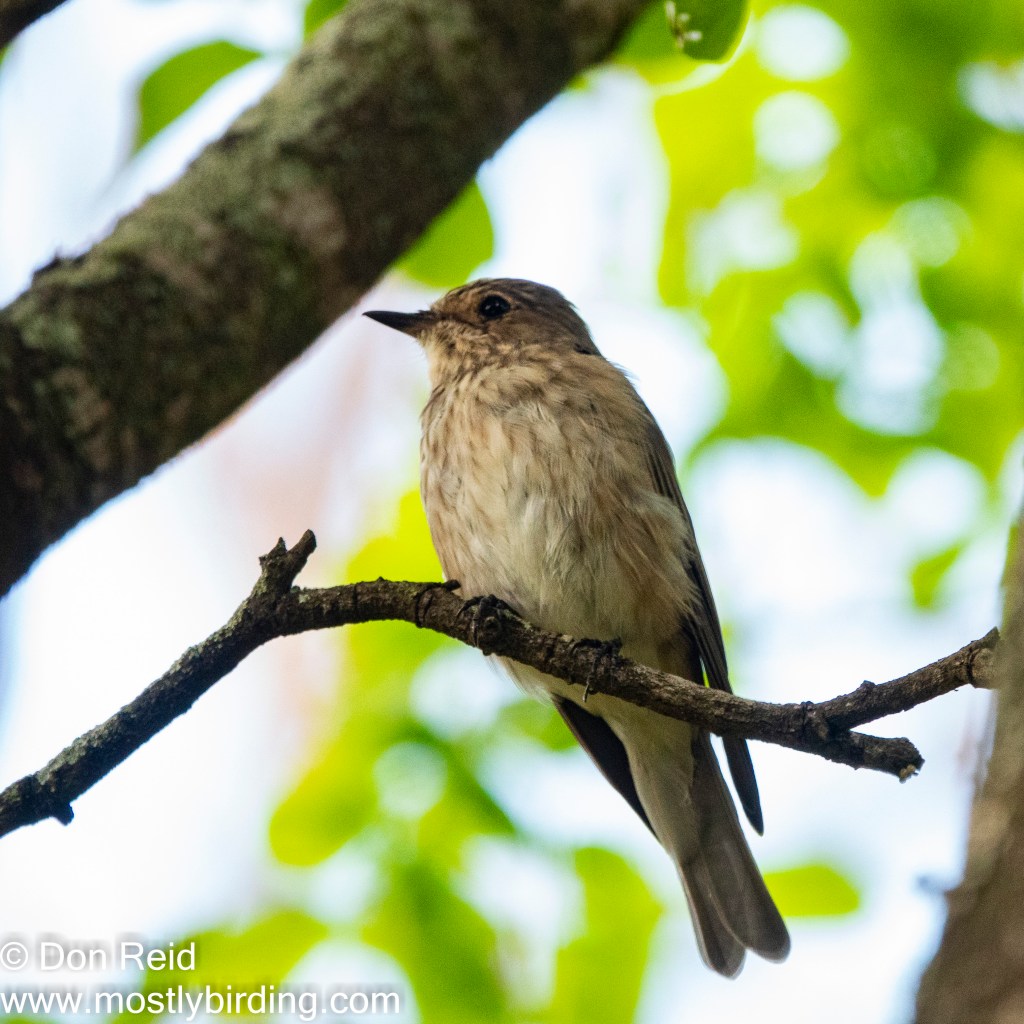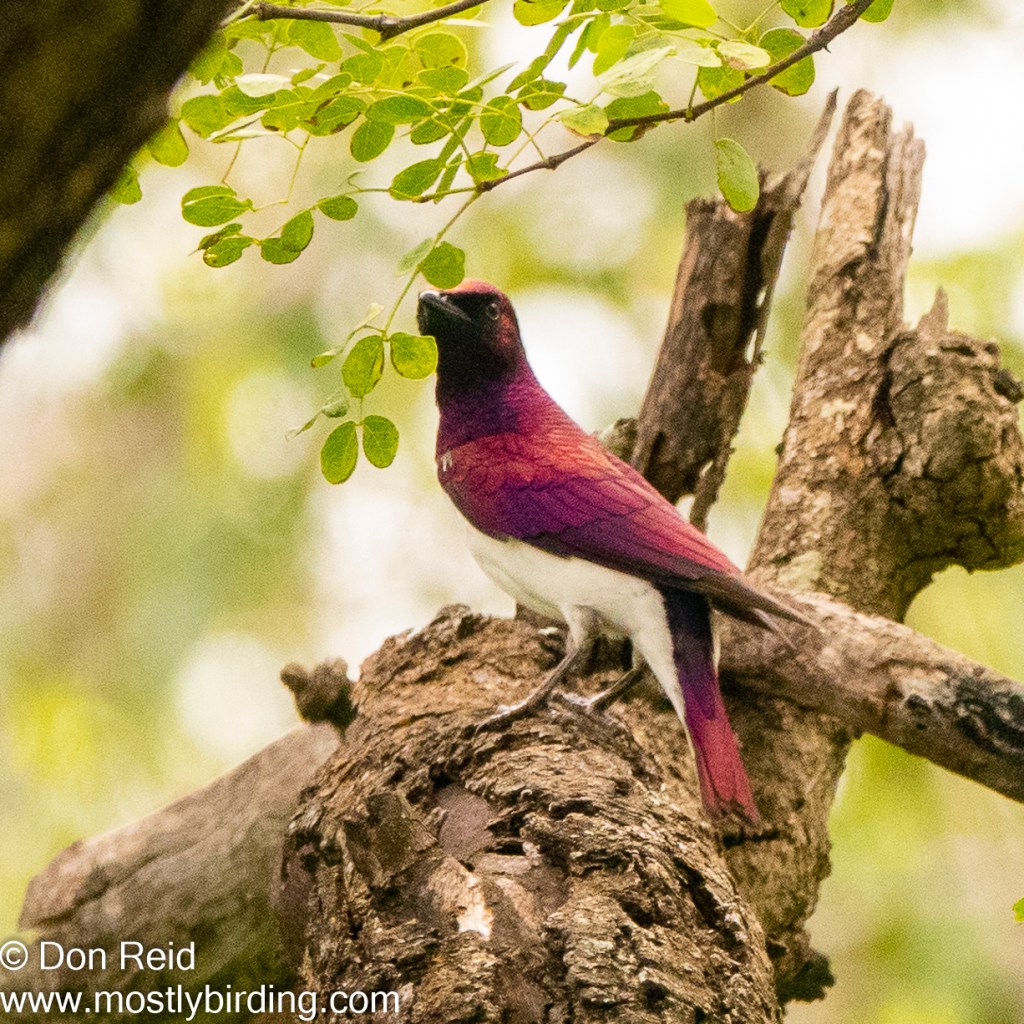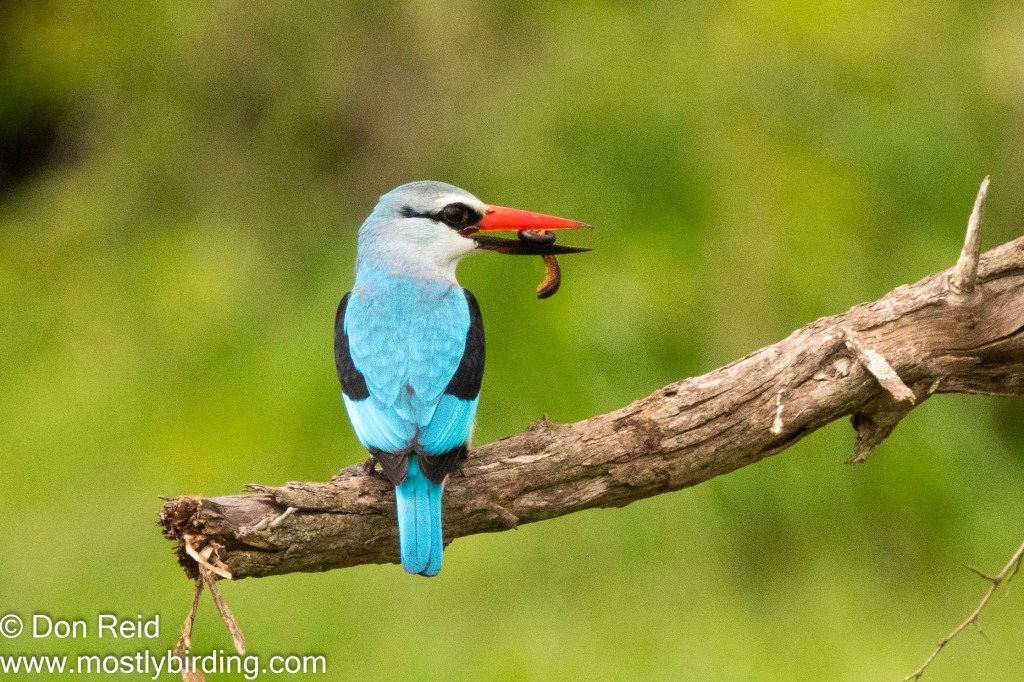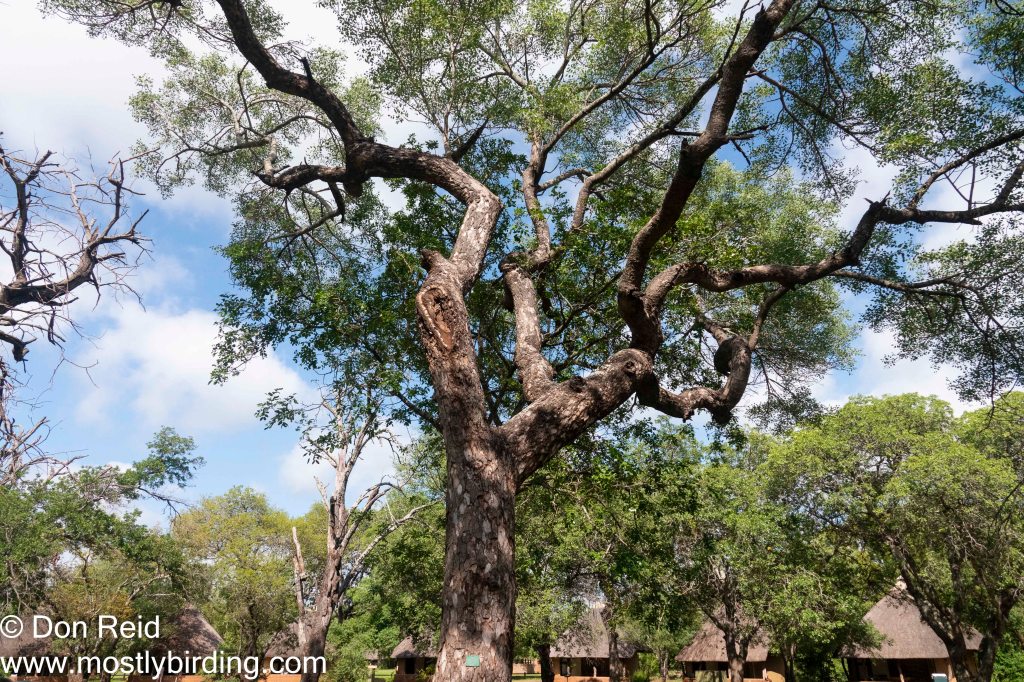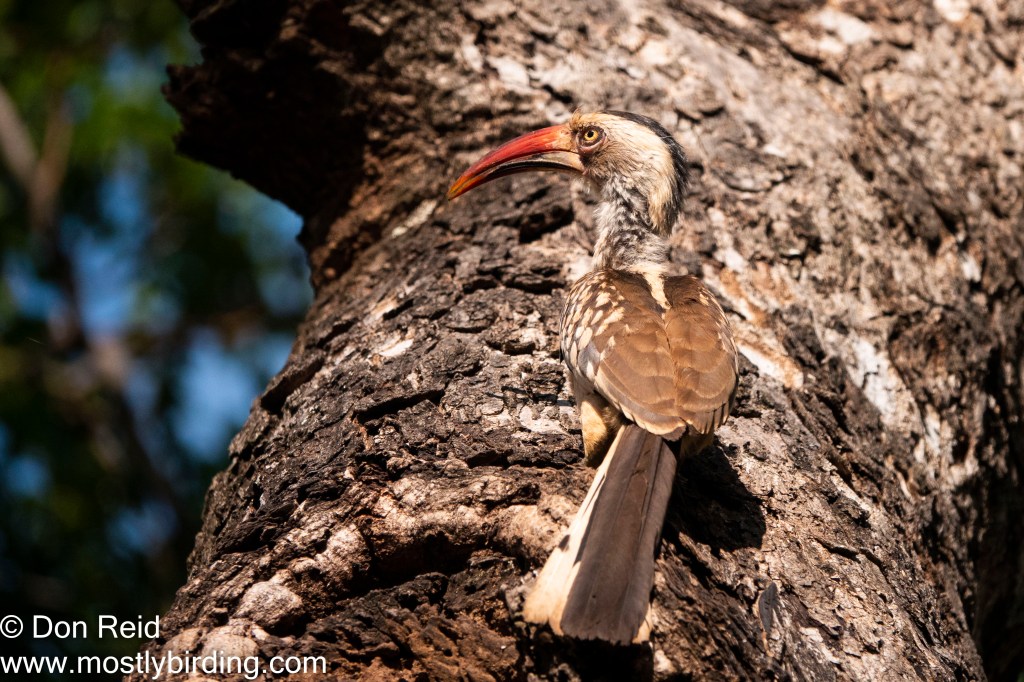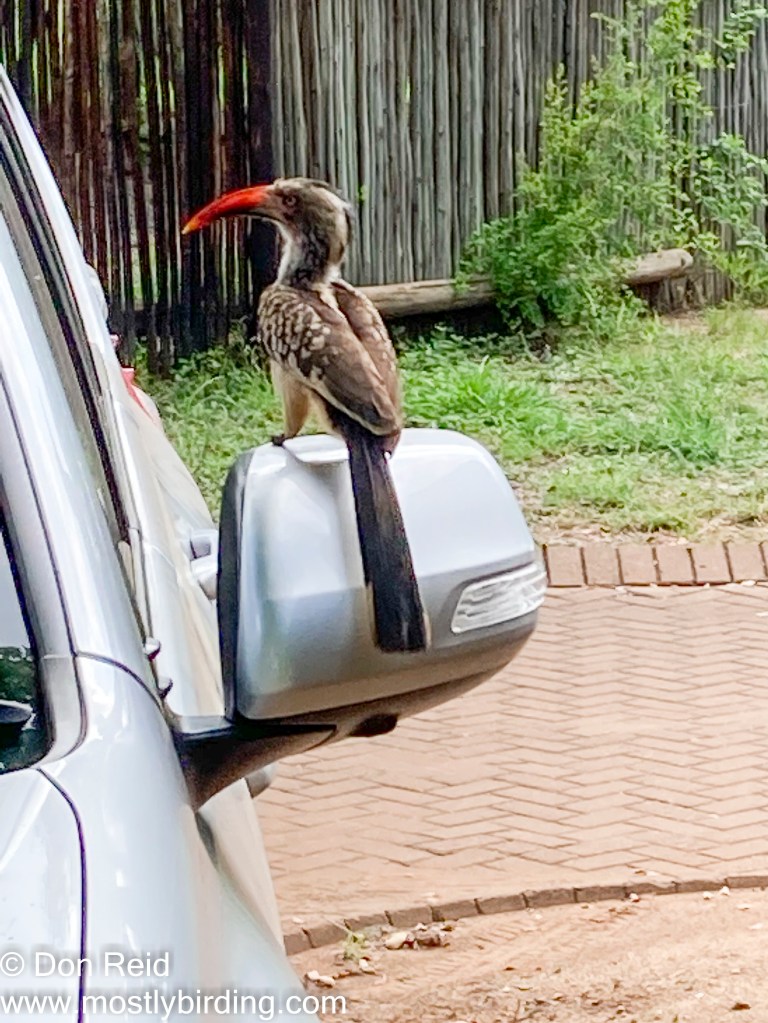Stoepsitter Birding
Sticking with the “stoepsitter” mode of birding as described in my recent post on the ‘Lawn Raiders’ of Verlorenkloof, here’s another version in a somewhat different location – Satara Rest Camp in the Kruger National Park.
(For the benefit of international readers “stoepsitter” is an Afrikaans term that translates roughly as one who spends much time on the stoep or verandah – but you knew that anyway, I’m sure)
It’s a well known fact amongst birders that, when visiting Kruger’s camps, time spent relaxing with binos on the stoep of your accommodation is bound to be rewarded with views of a variety of birds as they go about their daily business, on the grass, in the bushes and in the trees that most of the camps have in abundance.
That’s not to say one shouldn’t spend time getting out and about on game drives, exploring this national treasure of our wildlife, it’s just that when you want to relax in the rest camp, there’s no better place to do so than on the stoep of your rondavel or other accommodation.
Satara Rest Camp
During our December 2020 visit to Kruger, we spent four nights in Satara Rest Camp, one of which was in a fully equipped rondavel close to the perimeter fence, the other three in a more basic rondavel facing onto an expanse of grass with well established trees in close proximity.
This meant there was ample time for some serious stoepsitting, in between forays into the surrounding areas on game and birding drives and to visit the picnic spots for our traditional Kruger brunches (ooh, just typing that makes my mouth water and my nose prickle with the imaginary smell of a tasty brunch braai-ing on the pan).
The first afternoon and morning produced a fair sprinkling of interesting birds, before we changed rondavels, some of which I managed to photograph –
Spotted Flycatcher (Muscicapa striata / Europese vlieëvanger
A Spotted Flycatcher, a non-breeding Palaearctic migrant, was quietly going about its business on an outer branch with a view over an expanse of lawn, which in some camps has been allowed to grow “wild”, as you will see in the featured image at the top of this post.
Just a note on these “wild” lawns : it was initially jarring to see the lawns in such a wild state, having been used to manicured lawns in the camp for so many years, but I will admit that I now find this quite appropriate to the surroundings, as the contrast between the camp gardens and the natural habitat of the surrounding veld has been reduced – the ‘line has been blurred somewhat’. I like to think this was a conscious decision by the Park authorities.
Violet-backed Starling (Cinnyricinclus leucogaster / Witborsspreeu
Another migrant, the stunning Violet-backed Starling, but this one hasn’t got as far to migrate, being an intra-African migrant from tropical Africa.
And the missus was there, no doubt keeping an eye on handsome hubby to make sure he didn’t attract any competition. One of a number of species with significant, even dramatic, differences in plumage between male and female (known as dimorphism)
Woodland Kingfisher (Halcyon senegalensis / Bosveldvisvanger
The Woodland Kingfisher is also a breeding intra-African migrant, strikingly coloured and always a joy to find. Although they were present in the camp, this photo was taken on one of our drives.
Moving home
On the second morning we had to move to another rondavel, this time without a kitchen, but we had come prepared with a fold-up table, little gas cooker for the all-important boiled water for our tea and coffee and our picnic hamper that always accompanies our trips to Kruger. The camp has communal kitchens close by for the washing up etc .
Southern Red-billed Hornbill (Tockus rufirostris / Rooibekneushoringvoël
Once settled in to the new accommodation, I continued with stoepsitter birding and soon noticed that one particular bird was almost constantly present on the stretch of grass in front of the rondavel. It was a Red-billed Hornbill, a common species found throughout Kruger. I assumed it had found a good spot to find the small insects that make up most of its diet and did not pay too much attention to it as it came and went at regular intervals.
Hornbills look ungainly with their huge bills, but they have an admirable ability to find and pick up insects with some precision
At one stage I kept watching the Hornbill after it had found an insect but not swallowed it, which led me to think it was feeding its young. It flew up to a large tree nearby and settled on the trunk where a branch had probably broken off years earlier as there was a large scar, visible about halfway up the left hand trunk in the image below.
The Hornbill then poked its bill through a small hole in the trunk and that’s when I realised what it was doing.
Red-billed Hornbills nest in natural cavities in trees, which the female inspects before selecting one. The entrance is usually just wide enough to allow entry and is then sealed from the inside by the female, using own faeces, leaving just a narrow slit and effectively holding her prisoner during the laying and incubation of the eggs.
Once eggs are laid, incubation takes up to 25 days, followed by another 16 to 24 days during which the female cares for the young, all the while being fed by the male. Then the female breaks her way out leaving the youngsters in the nest and joins the male in providing food for the chicks, while the youngsters then re-seal the opening until they in turn are ready to take on the world at the ripe old age of around 50 days.
That’s quite a partnership! I felt privileged to have been able to see them in action.
All of this kept the male busy the whole day, but he still found time to go and see his reflection in my car’s window and frustratingly shadow box with what he thought was a possible intruder.

